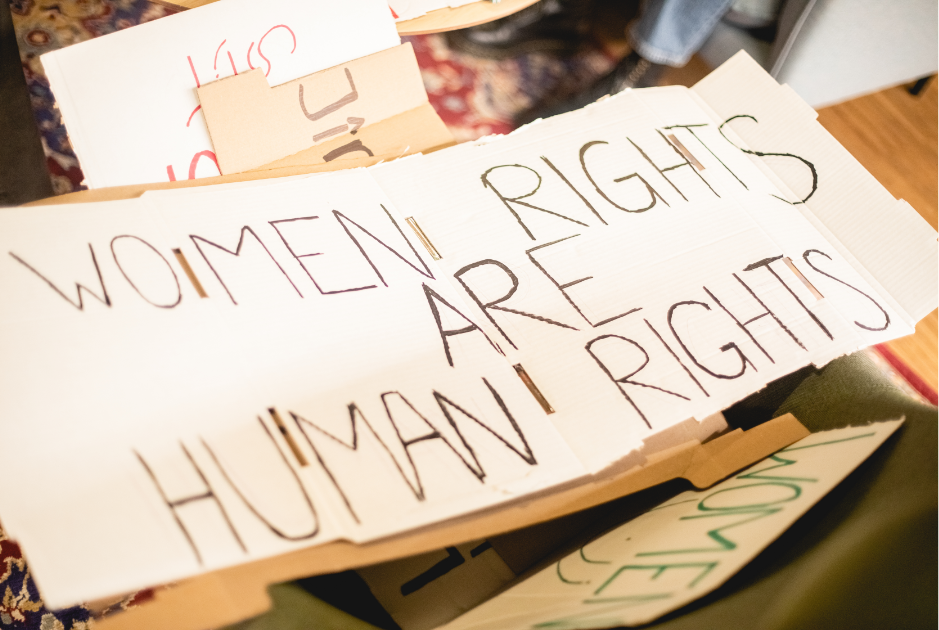1. On April 25, 1993, a massive LGBTQ rights rally stormed the National Mall in Washington, D.C.
And it was a spectacular, colorful sight to be seen.

Photo by Mark Wilson/AP.
2. By some estimates, the March on Washington for Lesbian, Gay, and Bi Equal Rights and Liberation is one of the largest political rallies in U.S. history.
Exact crowd sizes are difficult to nail down. But many believe the march attracted somewhere between 300,000 and 800,000 supporters from across the country and world.

Photo by Paul Richards/AFP/Getty Images.
3. These smiling, energized, angry, determined marchers were trailblazers that, in so many ways, helped lead us to where we are today when it comes to LGBTQ rights.

Photo by Elvert Barnes Photography/Flickr.
4. Because, back in 1993, lesbian, gay, bisexual, and transgender people lived under dramatically different circumstances.

Photo by Aryeh Rabinovich/AFP/Getty Images.
The 1990s might seem like they were yesterday. But in certain respects, they may have felt like the Dark Ages if you weren't straight and cisgender.
5. For one, the HIV/AIDS epidemic was still raging at crisis levels in the early 1990s.
The spread of HIV/AIDS still is, without a doubt, a major health concern in the U.S. today, particularly for certain sub-populations. But at the time these photos were taken — before many medical advances allowed for HIV-positive people to live longer, healthier lives — overall mortality rates were still rising at an alarming speed. They finally began dropping in 1995.

Marlin Hofer and David Briley, the two men in the foreground, were both affected by the HIV/AIDS epidemic. When this photo was taken, Hofer was HIV-positive and Briley was living with AIDS. Photo by Wilfredo Lee/AP.
6. One major focus of the march was securing more federal funding for HIV/AIDS research and patient care.
The marchers' voices helped lead to a more robust strategy in combating the virus in the years ahead.

Marchers unfold an AIDS memorial quilt with names of those we've lost written on its squares. Photo by Jennifer Law/AFP/Getty Images.
7. Another goal for many marchers in 1993 was ending the military's ban on LGBTQ people serving.

Photo by Elvert Barnes Photography/Flickr.
8. These were the days before "Don't Ask, Don't Tell," when an ever harsher ban was in place.
Before "Don't Ask, Don't Tell" was passed in 1994 — technically allowing LGBTQ members to serve as long as they did so entirely in the closet — a more explicitly homophobic ban barred all LGBTQ people from serving regardless of their status as being out or not.

Photo by Elvert Barnes Photography/Flickr.
9. Let's not sugarcoat it; "Don't Ask, Don't Tell" was still blatantly homophobic. But its passing did loosen certain restrictions.
These marchers helped push progress forward so that we could eventually be where we're at today. "Don't Ask, Don't Tell" was effectively repealed in 2011, and today, LGBTQ people can serve openly in our armed forces.

Photo by Mark Wilson/AP.
10. The marchers of 1993 also had other key demands in mind, like better inclusion of LGBTQ people and history in our education systems.
Shouldn't students learn about historical figures like Harvey Milk and Marsha P. Johnson just like they learn about Abraham Lincoln or Martin Luther King Jr.?
These marchers thought so.

Photo by Elvert Barnes Photography/Flickr.
It's been a long time coming, but we're starting to see signs of progress here too. In 2016, California became the first state to require LGBTQ history curriculums in its public schools — a move that may be sparking a new nationwide fight for better queer representation in classrooms, according to Vice.
11. Marchers wanted more rights for LGBTQ parents, too.
Marriage equality was a long way from being a mainstream topic in 1993, believe it or not. But these marchers were fighting for issues like same-sex adoptions and fairer custody laws long before they had widespread support in the U.S.

Photo by Elvert Barnes Photography/Flickr.
We now have national marriage equality and same-sex adoption from coast to coast, and studies show that kids raised by same-sex or same-gender parents grow up just as well adjusted as their peers raised by straight, cisgender parents.
12. The march also demanded an end to discrimination in all of its forms, regarding gender, race, religion, and more.
As the official march platform read:
"We demand an end to discrimination and violent oppression based on actual or perceived sexual orientation, identification, race, religion, identity, sex and gender expression, disability, age, class, AIDS/HIV infection.”

Photo by Elvert Barnes Photography/Flickr.
13. In so many ways, those marchers in Washington helped pave the way for much of the progress we can now celebrate.
They certainly weren't the first pioneers of the modern LGBTQ rights movement — the Stonewall rioters can wear that badge proudly — but history will look at the 1993 march as a pivotal moment for LGBTQ equality in America.

Photo by Elvert Barnes Photography/Flickr.
14. And for that, those marchers deserve a big thank you.

Photo by Elvert Barnes Photography/Flickr.
15. But over two decades later, the job is from over.
With a new administration in place threatening to strip away LGBTQ rights, every LGBTQ person and ally should be ready to fight like hell.

Photo by Elvert Barnes Photography/Flickr.
In its infancy, the Trump administration has already loosened protections for transgender kids in schools across the country. If the Affordable Care Act is gutted by congressional Republicans, our progress on HIV/AIDS could be reversed.
Vice President Mike Pence — one the most anti-LGBTQ politicians in the U.S. and who is sitting atop arguably the most homophobic and transphobic party platform ever in existence — has supported conversion therapy for children, legalized the discrimination of queer business patrons, and allowed an HIV outbreak to fester during his time as the governor of Indiana.
Trump's White House cannot be allowed to take us backward. On June 11, 2017, people are joining aPride march in Washington, ready to send a clear message to their representatives in office. Its impact has the potential to be just as loud — or louder — than in 1993.
16. Some things may have changed in the last 24 years, but our desire for nothing less than full equality remains the same.
"This whole experience has been very moving," marcher Barak Gale told The Washington Post about the march in 1993. "We don't want special rights; we just want the right to love like everyone else."

Photo by Marcy Nighswander/AP.





 What was I doing again?
What was I doing again? A space waitress at work.
A space waitress at work.  Waking Up Funeral GIF
Waking Up Funeral GIF Rihanna Nails GIF
Rihanna Nails GIF Yoga pants.Image via Canva.
Yoga pants.Image via Canva. Our natural lashes are nice just the way they are!
Our natural lashes are nice just the way they are! One step forward, many steps back. Image via Canva.
One step forward, many steps back. Image via Canva.  Homelessness is especially rampant on the West Coast.Image via Canva
Homelessness is especially rampant on the West Coast.Image via Canva